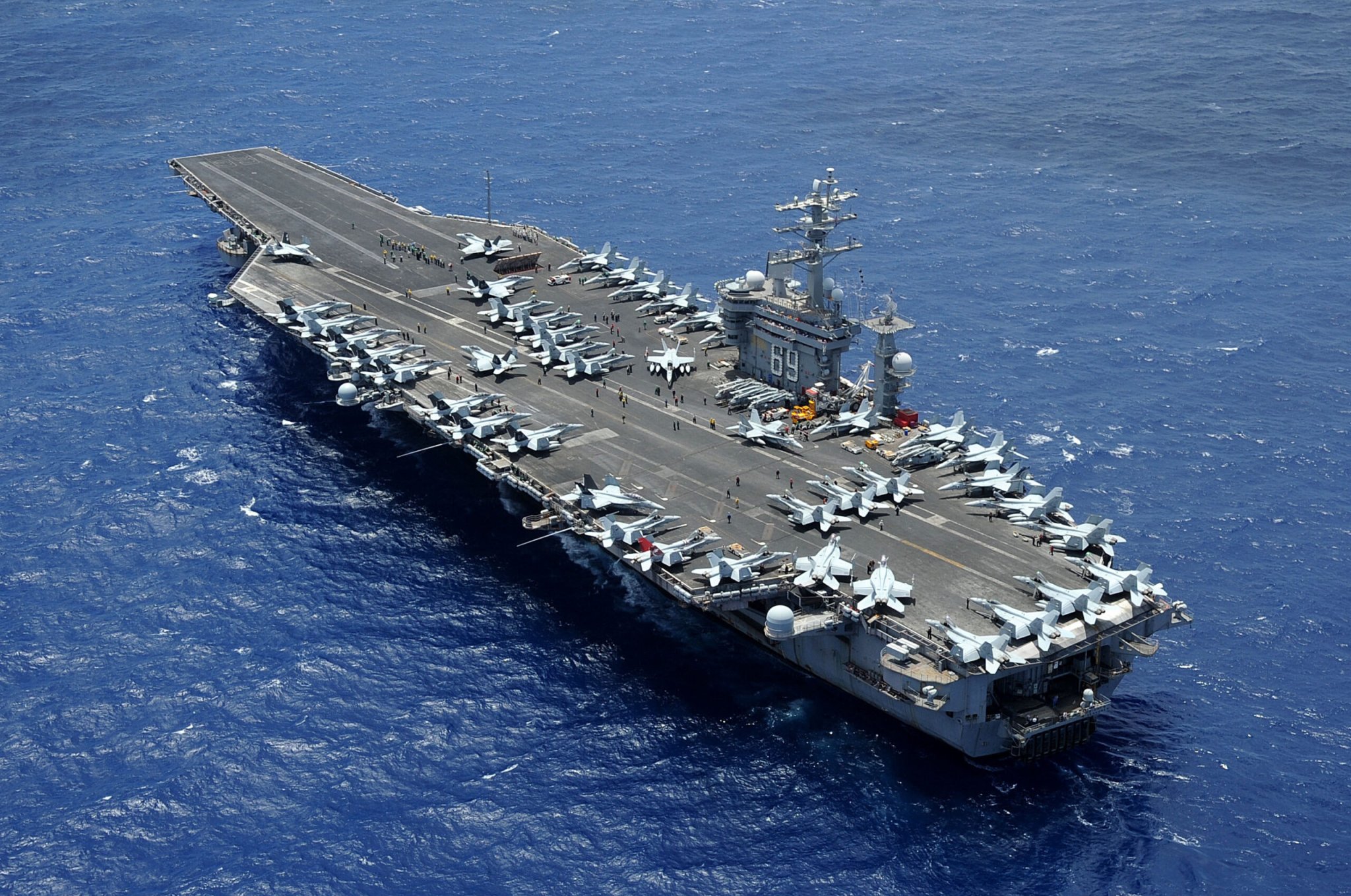

U.S. Navy helicopters responded to a distress call from a Danish ship in the Red Sea, sinking three boats used by Houthi-rebels from Yemen in the latest bout of violence in those waters.
The Maersk Hangzhou, a Danish-owned container ship flying under the Singapore flag, issued a distress call early morning today, Dec. 31 Sana’a time, saying it was under attack by four boats. All four boats were launched from areas in Yemen controlled by Houthi-rebels, according to U.S. Central Command. The ships were attempting to board the larger vessel and got within 20 meters of it. They opened fire on the Maersk Hangzhou with small arms, prompting a contracted security team onboard the commercial vessel to return fire.
The USS Dwight D. Eisenhower, an aircraft carrier in the region with its carrier strike group, as well as the USS Gravely, launched helicopters to respond to the distress call. When the Houthis on the smaller boats fired at the U.S. helicopters, they returned fire. Three of the four small boats were quickly sunk, killing all on board while the fourth Houthi boat fled.
No Americans were hurt, nor were any helicopters damaged. CENTCOM did not say how many Houthis were killed when their ships sank, nor did it say how many helicopters were used in the fight or how long the fighting lasted.
Subscribe to Task & Purpose Today. Get the latest military news and culture in your inbox daily.
The fight came hours after the Maersk Hangzhou issued its first distress call on Dec. 30, Sana’a time. According to the container ship, a missile fired from Yemen hit the vessel while it was in the southern Red Sea at approximately 8:30 p.m. local time. No one was reported injured and the ship was still able to sail. The USS Gravely and USS Laboon sailed to the container ship’s location. On the way the USS Gravely, an Arleigh Burke-class guided-missile destroyer, shot down a pair of anti-ship ballistic missiles launched from Yemen toward the Red Sea. No one was injured and the Danish owned-and-operated container ship carried on, the attempted seizure today.
The two incidents involving the Maersk Hangzhou mark the 23rd and 24th attack from Houthis on ships in the Red Sea and Gulf of Aden since mid-October. The Red Sea, linking the Suez Canal to the wider waters of the Arabian Sea, is one of the busiest shipping lines in the world. There have been minimal injuries reported by commercial ships targeted in the attacks, and in many cases the missiles and drones have not come close to the vessels, but the attempts have not stopped. A Houthi general has said the goal is to shut down commercial transit to or from Israel through the waters while the nation continues its war in Gaza.
The attacks have continued this month despite the announcement of a U.S.-led multinational coalition aimed at allowing freedom of navigation through the waters around Yemen. More than a dozen nations are a part of it, although most of the military assets being used for it are American. The two dozen incidents have impacted shipping in the area, with companies looking at alternatives to the Red Sea route.
The USS Dwight D. Eisenhower and its carrier group were sent to the Middle East in October, as the U.S. military moved assets to the area to deter regional violence following the Oct. 7 terrorist attack on Israel by Hamas and Israel’s subsequent retaliation.
The U.S. military has deployed troops, ships and aircraft to the Middle East several times this year in response to reported or confirmed attacks on shipping lanes. This summer, following several incidents with Iranian ships in the Strait of Hormuz, several Navy ships as well as a Marine Expeditionary Unit were moved to the region. Additional deployments have happened in the last two months.
The latest on Task & Purpose
- MARSOC, Navy SEALs, and Army Rangers: SOF by the numbers
- Marine veteran killed in Ukraine fought 12 Russians in last stand
- Sensitive documents showed up on War Thunder forums. Again.
- Army Combat Uniform’s insect repellent at center of fraud case
- U.S. Marine vet in Ukraine repulsed Russian attack in final moments
